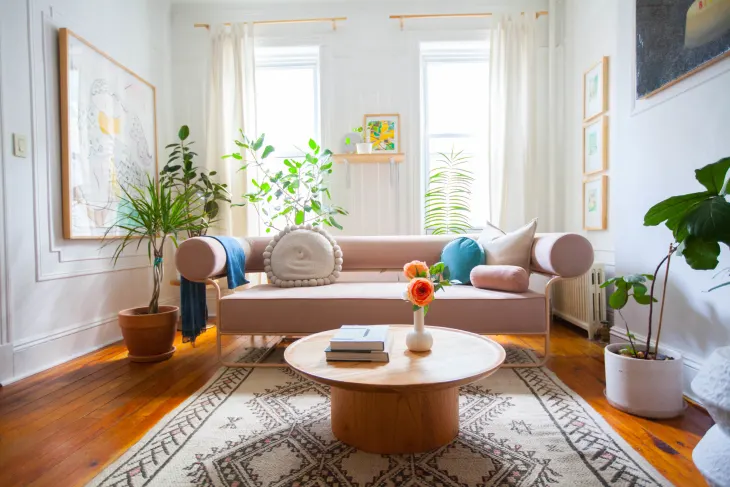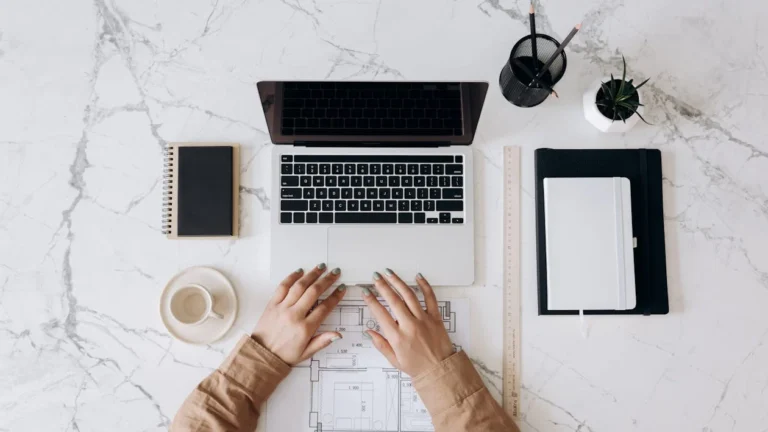
Living in a small apartment or home doesn’t mean sacrificing style, comfort, or functionality. In fact, with the right design approach and some creative thinking, small spaces can be transformed into beautifully organized, highly functional living areas. “Apartment Therapy,” a popular lifestyle website dedicated to home design, has long been a go-to resource for apartment dwellers seeking inspiration for maximizing their space. This article will explore several key strategies and tips from Apartment Therapy to make the most out of small living spaces.

Why Maximizing Small Spaces is Important
Living in a small apartment or house comes with its own unique set of challenges. The limited space can often feel cramped and cluttered, especially if you have too many possessions or a poorly designed layout. Maximizing your small space allows you to create a more functional, comfortable, and aesthetically pleasing environment. Whether you’re living in a studio apartment, a one-bedroom, or a compact urban loft, transforming small spaces into efficient, livable areas can have a major impact on your quality of life.
The Benefits of a Well-Designed Small Space
- Improved Organization: A well-planned small space can help you stay organized and reduce clutter. By using smart storage solutions and multi-functional furniture, you can keep your living area tidy and free of unnecessary items.
- Enhanced Functionality: When you make the most of every square foot, your apartment becomes a more functional environment. A small space that is thoughtfully designed can serve multiple purposes—whether it’s doubling as an office, entertainment area, or storage unit.
- More Comfortable Living: Maximizing small spaces isn’t just about making things look good—it’s about making them work better for you. Properly arranged furniture, clever storage solutions, and strategic color choices can make a small apartment feel more open and inviting.
Apartment Therapy Small Spaces: Tips and Tricks
1. Embrace Vertical Space for Storage and Style
In small spaces, you often don’t have the luxury of wide open floor plans. However, one of the most effective ways to maximize limited square footage is by making use of the vertical space in your home.
Shelving and Wall-Mounted Units: Instead of relying solely on furniture that takes up floor space, think about how you can utilize your walls for storage. Wall-mounted shelves and floating bookshelves provide ample space to store books, decorative items, or even kitchen essentials. These can free up valuable floor space and allow you to keep the room looking open and airy.
Hanging Plants and Artwork: Not only do hanging plants add a touch of greenery and life to your space, but they also take up no floor space. Similarly, hanging artwork or mirrors on the walls can make a room feel larger and more dynamic without requiring additional furniture.
Lofted Beds or Storage Platforms: For those with very limited space, consider using lofted beds to create more room beneath. By lifting your bed off the floor, you can turn the space underneath into a cozy seating area, a desk, or additional storage. Raised platforms or bunk beds can also help maximize floor space in bedrooms.
2. Use Multi-Functional Furniture
Multi-functional furniture is one of the cornerstones of small space living. These pieces serve more than one purpose, making them highly valuable in tight living quarters.
Sofa Beds or Murphy Beds: A sofa bed allows you to use your living room for both seating and sleeping without needing a separate bedroom. Similarly, a Murphy bed—often used in studios or one-bedroom apartments—folds up into the wall when not in use, leaving more space for other activities during the day.
Storage Ottomans and Coffee Tables: Furniture that doubles as storage is a lifesaver in small spaces. Coffee tables with hidden compartments or ottomans that can be opened up to store blankets, pillows, or even clothes are great examples of this. These pieces offer practical storage while still being stylish and functional.
Modular Sofas: Modular seating can be rearranged to fit your needs, which is perfect for small spaces. Whether you want a traditional sofa layout or need to create an extra bed for guests, modular sofas can adapt to different scenarios.
3. Go Light with Color and Décor
Color has a huge impact on how a space feels, and when it comes to small spaces, choosing the right palette is essential for creating an illusion of space and openness.
Light Colors to Open Up the Room: According to design experts at Apartment Therapy, lighter colors like whites, pale grays, and pastels can make a room feel more expansive and airy. Lighter hues reflect natural light and prevent the room from feeling closed off. If you love bold or dark colors, consider using them as accents on smaller walls, furniture, or accessories, rather than overwhelming the space.
Mirrors to Create Depth: Mirrors are a popular design tool in small spaces because they reflect light and give the illusion of depth. A large mirror on one wall can make a room appear much larger and brighter, creating a sense of openness that’s crucial in small spaces.
Declutter and Simplify: Minimalism is key in small-space design. Excessive decor or bulky furniture can make a room feel crowded and chaotic. Instead, focus on a few well-chosen pieces that add character and function without overcrowding the room. Apartment Therapy suggests keeping surfaces clear and opting for clean lines and simple furnishings.
4. Clever Storage Solutions
When you’re working with limited space, creative storage solutions are a must. Apartment Therapy provides numerous ideas for organizing your belongings without sacrificing style.
Under-Bed Storage: Beds are some of the most underutilized pieces of furniture in small spaces. Instead of allowing the area under your bed to collect dust, use it as a storage zone. Use bins, drawers, or even a storage bench at the foot of your bed to store seasonal clothes, shoes, or other items that you don’t need to access frequently.
Hidden Storage: Furniture with hidden storage compartments—such as storage benches, ottomans, or coffee tables—are a great way to store extra items like blankets, books, or even small appliances. These pieces are especially useful in living rooms, where you don’t want to clutter up your space with unnecessary storage units.
Closet Organization: Maximizing closet space is crucial for small apartments. Use slimline hangers, stackable bins, and over-the-door organizers to maximize every inch of closet space. You can also install hooks or floating shelves inside your closet to hold accessories, bags, or shoes.
5. Incorporate Functional Zones
In an open-plan apartment, or even in a studio, it’s essential to divide the space into functional zones. This can help you create a more organized and efficient living environment.
Room Dividers: If you live in a studio apartment or a space without walls separating rooms, you can use room dividers to create visual separation. Apartment Therapy suggests using bookshelves, curtains, or even large plants as dividers. This helps to establish different zones for different activities—like a sleeping area, work area, and living area—while maintaining a cohesive design.
Area Rugs and Furniture Layouts: Using area rugs can help define different sections of a room. A rug under the dining table creates a designated dining space, while another rug in the living room helps separate that zone from the rest of the apartment. Pay attention to furniture layout as well—arranging furniture to create a natural flow can also help define areas without the need for physical barriers.
6. Light and Airflow Are Key
The way light and airflow are managed in a small space can make a significant difference in how comfortable and inviting it feels.
Maximize Natural Light: When possible, maximize natural light by keeping windows unobstructed and using light, airy curtains or blinds. If privacy is a concern, opt for sheer fabrics that let light through without compromising on privacy.
Ventilation and Fresh Air: In a small apartment, it’s easy for air to become stale. Open windows whenever you can, and if needed, consider using a small fan to promote airflow. Keeping your space fresh and airy can prevent it from feeling cramped or suffocating.
Conclusion
Maximizing small spaces is all about being strategic with how you use every inch of your apartment. Whether you’re using vertical space, investing in multi-functional furniture, or making smart design choices, there are many ways to turn a compact living area into a stylish, efficient, and comfortable home. Drawing inspiration from resources like Apartment Therapy, and incorporating clever storage solutions, smart zoning, and a cohesive design palette, can help you make the most out of any small space. With a little creativity, you can transform your apartment into a space that feels expansive, functional, and uniquely yours.
You may read also
49ers vs Kansas City Chiefs Match Player Stats
49ers vs Kansas City Chiefs Match Player Stats






